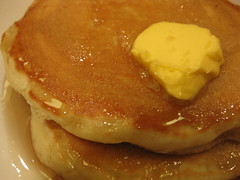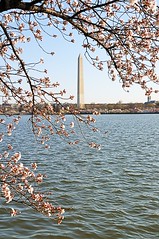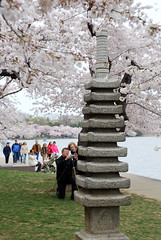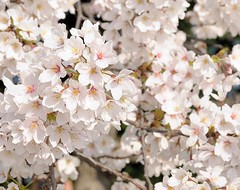( – promoted by lowkell)

 Amid all the screaming signs about Global Warming’s increasingly serious impact on the world around us and on human civilizations future prospects, the ‘luxury’ symbolic canaries in the coal mine always create mixed emotions. Global Warming’s threat to skiing (and declining viable Winter Olympics locations), and to wine making and bourbon and beer and chocolate and maple syrup and … production, etc … Yes, these are tangible examples of how global warming impacts the world around us and impacts us. On the other hand, compared to increasing natural disasters, devastating storms and droughts threatening vulnerable populations and disruptions to global agricultural production systems, these are “luxury” items that (in and of themselves) whose disruption does do not represent a fundamental threat to human civilization (no matter how important the maple syrup for your pancakes or that bourbon for warming up after a day on the slopes). Yet, as we all know in our Madison Avenue dominated world, symbols matter and cherished symbols even more so.
Amid all the screaming signs about Global Warming’s increasingly serious impact on the world around us and on human civilizations future prospects, the ‘luxury’ symbolic canaries in the coal mine always create mixed emotions. Global Warming’s threat to skiing (and declining viable Winter Olympics locations), and to wine making and bourbon and beer and chocolate and maple syrup and … production, etc … Yes, these are tangible examples of how global warming impacts the world around us and impacts us. On the other hand, compared to increasing natural disasters, devastating storms and droughts threatening vulnerable populations and disruptions to global agricultural production systems, these are “luxury” items that (in and of themselves) whose disruption does do not represent a fundamental threat to human civilization (no matter how important the maple syrup for your pancakes or that bourbon for warming up after a day on the slopes). Yet, as we all know in our Madison Avenue dominated world, symbols matter and cherished symbols even more so.
As a native of the Washington area, the Cherry Blossoms are perhaps the quintessential universal symbol of nature’s beauty. While those around the Tidal Basin are “the” trees for the Cherry Blossom festival, there are numerous communities with large numbers of these trees and it is hard to be a resident without having some connection — year in and year out — with this blossoming sign of spring, even if one doesn’t deal battle the tourist hordes to see the Washington Monument framed by blossoms. (Note, the photo above from GHBrett wonderfully captures the framing using a tree that I am almost certain that I have known for decades and have likely taken 20 photos over the years of various visitors/tourists/family members.)
Gardening provides many Americans their most intimate interaction with natural systems. In my garden, bulbs planted in 1998 appeared in early/mid-April 1999. This year: every single one had flowered by 12 March (and have been appearing earlier, it seems, with each passing year). “A” garden, “a” backyard doesn’t prove global warming, especially when relying on one’s impressions rather than detailed records. Agricultural systems and cultural icons, like DC’s Cherry Blossoms, drive detailed record keeping that move beyond impression to factual records that enable detailed and statistically sound analysis.
my garden, bulbs planted in 1998 appeared in early/mid-April 1999. This year: every single one had flowered by 12 March (and have been appearing earlier, it seems, with each passing year). “A” garden, “a” backyard doesn’t prove global warming, especially when relying on one’s impressions rather than detailed records. Agricultural systems and cultural icons, like DC’s Cherry Blossoms, drive detailed record keeping that move beyond impression to factual records that enable detailed and statistically sound analysis.
The Washington Post featured, on its front page 15 March 2011, a story driven by 2012’s “early” blooming Cherry Blossoms and building on a Nov 11 published scientific study (full study here) from University of Washington (which has its own Cherry Blossoms) and Korean university researchers that looks to Global Warming’s likely impact on this cultural icon for the decades to come. As that study’s introduction noted, a 2001 study had already documented that
In Washington, DC area, 89 of 100 plant species surveyed, including flowering cherry trees, exhibited a significant advance of 4.5 days in first-flowering over the 30 years from 1970 to 1999
In short, their work suggests that Washington, DC, will have to move the Cherry Blossom up by nearly a month by 2050 or risk having blossom-less trees for the parade.
This type of scientific work is enable as, due to the international attention to the Japanese gift to America, detailed records exist for the Cherry Blossoms blooming. (An interesting item is that this sort of detailed data set fits with other situations where people have kept, for entirely different reasons, natural data that enables providing yet another path toward showing quite tangibly the changing global climate. Wine records dating back centuries. Bird counts. And, so on … These very tangible records are one of the myriad of paths that show, quite solidly, how Global Warming is impacting natural systems around the world and the agricultural systems on which humanity depends.) Courtesy of TP Green, this graphic (based on National Park Service data going back to 1921) shows how the average blooming time for the trees has moved about 10 days earlier in the last 90 years:

As with study after study documenting what is going on, this chart certainly suggests that this garderner’s “impression” of ever-earlier flower blossoming is anecdotal evidence that is supported by scientific study.
About Journalistic Caveating
While The Washington Post‘s reporters did not, at least for this one occasion, go to see a quote from an anti-science syndrome suffering global warming denier (such as that prominent scientist James Inhofe), the wordsmithing to create doubt and uncertainty about the science in this article (including its headlines) is too typical of The Post’s faux and balanced routine when it comes to climate science. Here are a few examples:
- The online version is
 entitled “Could cherry blossoms one day be blooming in winter?” Note, please, that the article states that “peak bloom period March 20 to 23” which places “peak” blooms as beginning the first day of spring which means (as the article discusses) that the Cherry Blossoms are already well underway in their blossoming — e.g, they are already blossoming in winter.
entitled “Could cherry blossoms one day be blooming in winter?” Note, please, that the article states that “peak bloom period March 20 to 23” which places “peak” blooms as beginning the first day of spring which means (as the article discusses) that the Cherry Blossoms are already well underway in their blossoming — e.g, they are already blossoming in winter. - The print version is entitled “Much-too-early bloomers? As temperatures rise, scientists speculate that cherry blossom time could advance by a month.” Hmm … “speculate” is the type of term used to foster increased belief in uncertainty.
- “Now comes a team of scientists theorizing that with drastic warming of the globe, future decades could see blossom times not just a few days early but advanced by almost a month.” Again, “theorizing” is the type of word use to foster doubt. (Rather than “predict” or “research shows” or …) (Also, by the way, “now comes a team …” when the formerly published article appeared four months ago and not late last night.)
- Ending the article with a quote from Robert DeFeo, Park Service horticulturist and chief cherry tree forecaster,”of [the University of Washington] global warming report: “They’re in a cerebral area that’s so far out from me that I can’t even intelligently comment on it.” … DeFeo noted that other scientists have already theorized that global warming might be behind the advance of bloom periods during the last 30 years or so. Indeed, in 2000 Smithsonian scientists reported that the cherry trees were then blooming about a week earlier than they had in 1970, probably because of global warming. DeFeo said there’s no way to prove the future warming impact right or wrong. He added in an e-mail: “We’ll see in 2080.”While DeFeo’s “we’ll see in 2080,” notable is that The Washington Post authors did not quote climate scientists for their opinion as to the legitimacy of the scientists’ work modeling the Cherry Blossoms’ future under different climate scenarios. (Note that the article makes no mention of the excellent Capital Weather Gang post (a WashPost blog) which did a better job predicting, it seems, Cherry Blossom peaking — based on analysis of long-term weather patterns — than did the official forecaster.)
See:
- New Study: Global Warming Could Push Cherry Blossoms into February, The Green Miles
- Washington, D.C. cherry blossoms destined for early bloom, Capital Weather Gang prediction
- As Climate Changes, Tidal Basin Cherry Blossoms Could Peak At Their Earliest Yet, Think Progress Green
- Related: 25 tips for Climate Change Journalists, Under the Banyan



![Saturday News: “Trump’s latest tariff TACO probably won’t make your life more affordable”; “The Epstein Email Cache: 2,300 Messages, Many of Which Mention Trump”; “[MTG] questions if Trump is still the ‘America First’ president”; “Jim Ryan tells all: ‘What did the Governor know, when did he know it?’”](https://bluevirginia.us/wp-content/uploads/2025/11/montage1115-238x178.jpg)








![Saturday News: “Trump’s latest tariff TACO probably won’t make your life more affordable”; “The Epstein Email Cache: 2,300 Messages, Many of Which Mention Trump”; “[MTG] questions if Trump is still the ‘America First’ president”; “Jim Ryan tells all: ‘What did the Governor know, when did he know it?’”](https://bluevirginia.us/wp-content/uploads/2025/11/montage1115-100x75.jpg)
